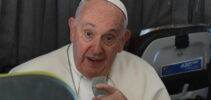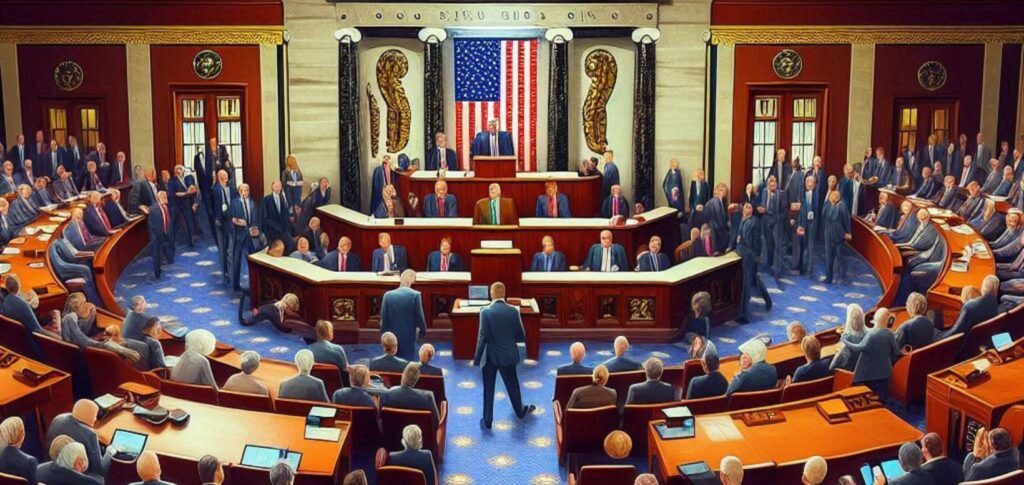Francis, the first Latin American pope, is working to have a College of Cardinals that is less Western and more oriented toward the Southern Hemisphere.
ADVERTISING
The solemn ceremony, the ninth Ordinary Consistory since the pontiff's election in 2013, took place in the Vatican's St. Peter's Square on a sunny morning.
The new cardinals, with their scarlet red capes – a color reminiscent of the blood shed by Christ on the cross – knelt before Francis to receive the cardinal's cap and a distinctive ring.
“Courage, courage!”, said the Pope to the new cardinals, who were applauded by the faithful, who displayed the flags of several countries.
ADVERTISING
Among the new cardinals are diplomats, close advisors and men with many experiences, profiles that reflect the priorities established by Jorge Bergoglio, 86 years old.
Among the 21 new prelates who will help the pope in governing the Church, 18 are under 80 years old, which means they will be able to participate in the conclave that will define the next pontiff.
During the ceremony, Francis celebrated that the new cardinals come “from all parts of the world” and compared the college of cardinals to “a symphony orchestra in which diversity is indispensable” and each musician “must listen to the others”.
ADVERTISING
"Break"
Sensitive to the “peripheries” and minority communities, Francis seeks to promote clergy from developing countries to the main echelons of the Church, breaking with the practice of systematically highlighting titular archbishops of large dioceses.
“He looks for cardinals that correspond to the era. They are people who have distanced themselves from the ancient Church, who are making a positive break”, explains an observer from the Holy See to AFP.
The list of new cardinals includes several names from regions with an increase in the number of faithful, such as Africa, Asia and Latin America.
ADVERTISING
Five Latin Americans were nominated, but only three will be able to participate in a possible conclave.
The continent's new cardinal electors are two Argentines, Monsignor Víctor Manuel Fernández, prefect of the influential Dicastery for the Doctrine of the Faith, and Ángel Sixto Rossi, archbishop of Córdoba, in addition to the archbishop of Bogotá, the Colombian Luis José Rueda Aparicio.
Another Argentine, Luis Pascual Dri, confessor at the Sanctuary of Our Lady of Pompeii, and the Venezuelan Diego Rafael Padrón Sánchez, archbishop emeritus of Cumaná, will be cardinals, but not voters, as they are over 80 years old.
ADVERTISING
Among the newly chosen ones are clerics from two geopolitically delicate areas: the Latin Patriarch of Jerusalem, the main Catholic authority in the Holy Land, and the bishop of Hong Kong, crucial in trying to improve the Vatican's relations with communist China.
The new list of cardinals also includes the archbishops of Juba (South Sudan), Cape Town (South Africa) and Tabora (Tanzania).
Francis' vision
European clergy, where Catholicism is in decline, will continue to be strongly represented, as will eight new cardinals, including the 49-year-old Portuguese Américo Aguiar, archbishop of Setúbal.
Aguiar will be the second youngest member of the College of Cardinals, behind only the apostolic prefect in Ulan Bator (Mongolia), Giorgio Marengo, six months younger.
Another highlight is the appointment of three members of the Curia, the central “government” of the Holy See, close to the pope: the Italian Claudio Gugerotti, the Argentine Víctor Manuel Fernández and the American Robert Prevost.
The appointment of the cardinals is closely monitored by analysts in search of clues about the direction of the Church, due to Francisco's advanced age (86 years old), the fact that he needs a wheelchair to travel and does not rule out the possibility of resigning from the position. , as his predecessor Benedict XVI did, in the event of a decline in his health.
After the consistory, the Catholic Church now has 137 cardinal electors, 73% of them (99) appointed by Jorge Bergoglio, while 21% were created by Benedict XVI and 6% by John Paul II.
The distribution could weigh on the two-thirds majority needed to choose the future spiritual leader of the Catholic Church and 1,3 billion faithful, by increasing the likelihood that voters will share the current pontiff's ideas.
But the election of a new pope is always unpredictable and, as an ancient Roman saying states, “whoever enters a conclave as pope leaves as a cardinal.”





